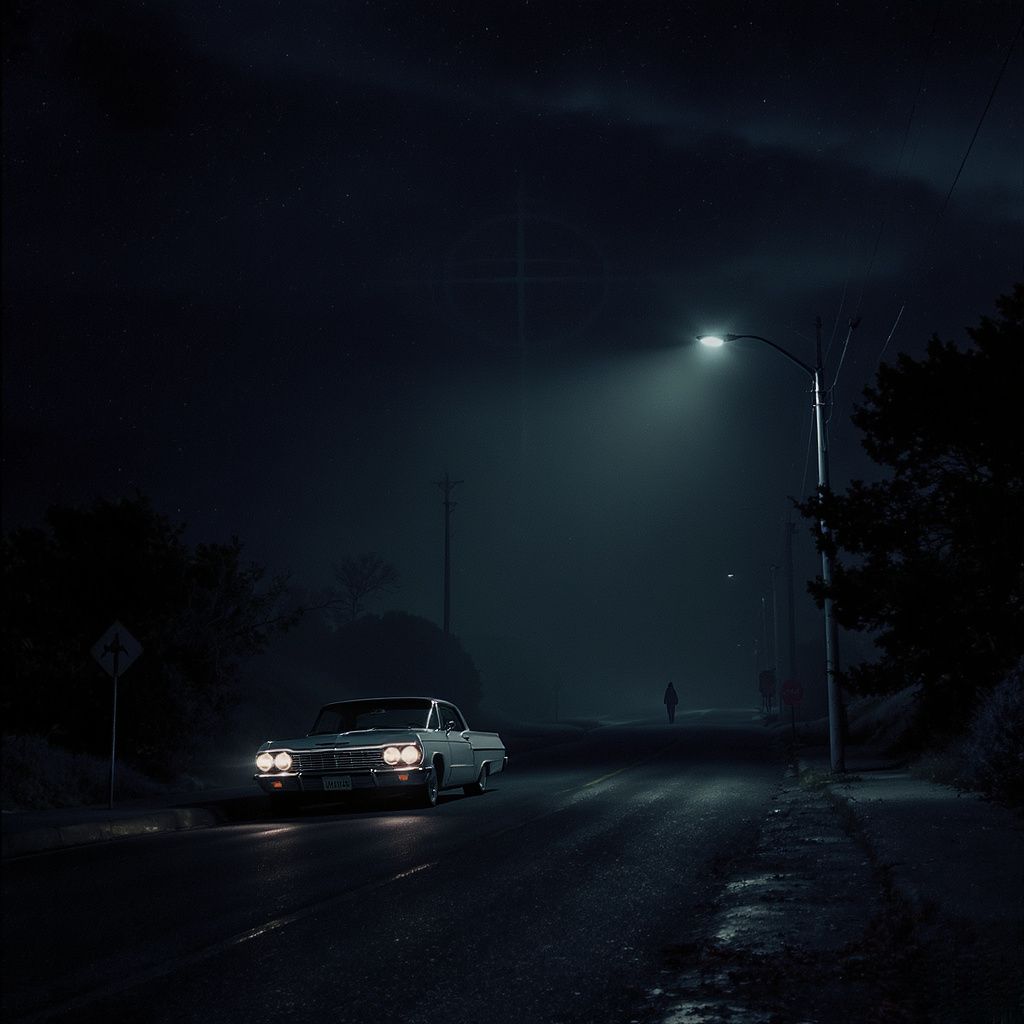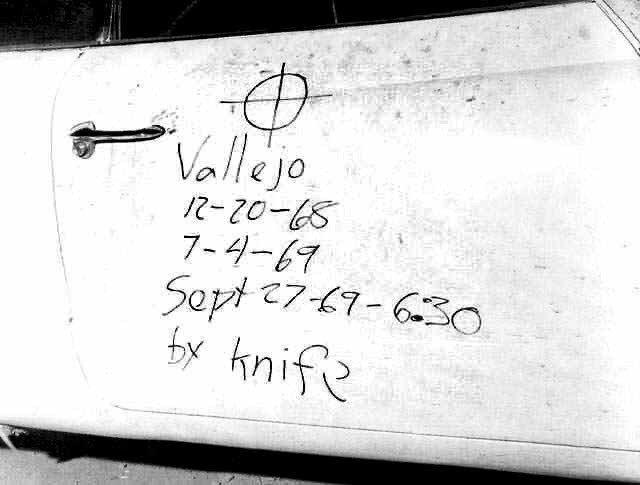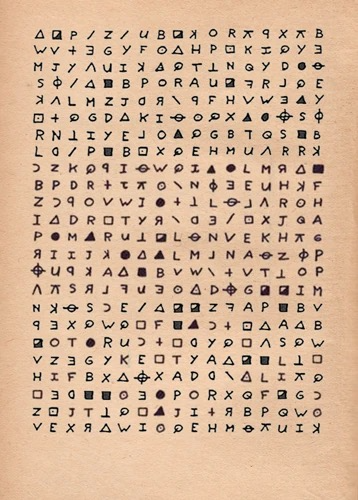The Zodiac’s Shadow: Unraveling a California Nightmare
Posted on 10/13/2025 at The Curmudgeon’s Chronicle

The Zodiac’s Shadow: A Killer’s Game Begins
Vallejo, California, 1968. A quiet night shatters with gunfire, and a killer scripts his legend in blood and cryptic ink. He didn’t just murder – he taunted the world with ciphers, daring cops and armchair sleuths to catch him. Five decades later, the Zodiac Killer remains a ghost, his shadow stretching across a California nightmare. Welcome to the mystery that refuses to die.
In the late 1960s, while flower power bloomed and Vietnam protests raged, a predator stalked Northern California, turning lovers’ lanes and city streets into his stage. The Zodiac Killer, as he smugly named himself, didn’t just kill – he choreographed a spectacle. Five confirmed murders, two survivors, and a trail of letters and ciphers that mocked police and gripped a nation. Unlike our previous dive into Jack the Ripper’s Whitechapel fog, where we pinned Charles Cross as the prime suspect, this series won’t name a killer. Why? Because the evidence, stubborn as a Vallejo mule, refuses to point to one man. Instead, we’ll unravel the crimes, the taunts, and the maddening stalemate that keeps the Zodiac free. Buckle up for an eight-part journey through a case that’s equal parts chilling and infuriating.
The Stage: A California Cauldron
Picture California in 1968: bell-bottoms, Beatles records, and a counterculture hum. But beneath the sunshine, darkness festered. Vallejo, a working-class town north of San Francisco, was no Whitechapel slum, but its quiet roads – like Lake Herman and Blue Rock Springs – were perfect for a killer who craved isolation. San Francisco, with its bustling Presidio Heights and Chronicle newsroom, offered a spotlight for his ego. The Zodiac didn’t just strike; he performed, weaving a myth that outlasted his bullets. His confirmed crimes, spanning December 1968 to October 1969, left five dead and a region on edge:
- December 20, 1968, Lake Herman Road, Vallejo: David Faraday (17) and Betty Lou Jensen (16), gunned down in a parked car. Ten .22-caliber shots, no motive, a white Chevy Impala spotted nearby. The Zodiac hadn’t yet claimed it, but the pattern was set.
- July 4, 1969, Blue Rock Springs, Vallejo: Darlene Ferrin (22) killed, Michael Mageau (19) wounded by a 9mm Luger. A flashlight blinded them, and a monotone voice claimed the kills, phoning Vallejo PD to gloat. The 408 cipher followed, sent to the San Francisco Chronicle.
- September 27, 1969, Lake Berryessa, Napa: Cecelia Shepard (22) stabbed to death, Bryan Hartnell (20) survived. A hooded figure, Zodiac symbol on his chest, struck in broad daylight, scrawling a message on Hartnell’s car door.
- October 11, 1969, Presidio Heights, San Francisco: Cab driver Paul Stine (29) shot in the head. A torn shirt, a botched police radio call, and a killer who vanished into the night.

The Zodiac’s Berryessa calling card: a car door scrawled with his kills, mocking justice in plain sight.
Five dead, two survivors, and a boast of 37 kills – though only these are verified. The Zodiac’s letters, dripping with arrogance, arrived at newspapers from 1969 to 1974, each a jab at the cops’ fumbling. His ciphers – 408 solved in days, 340 cracked in 2020 – promised answers but delivered riddles. This wasn’t just murder; it was a game, and he held the board.
The Suspect Circus: Shadows, Not Answers
If Jack the Ripper was a phantom in Whitechapel’s alleys, the Zodiac is a taunt in broad daylight. No single suspect fits, and the evidence mocks us as much as he did. Let’s meet the main players, weighted by a method adapted from our Ripper series: presence at crime scenes (up to 40%), proximity to locations (up to 20%), opportunity based on timelines (up to 15%), behavioral evidence (up to 15%), and profile fit (up to 10%). Uncertainties adjust the ranges, and we stick to 1968–1974 records plus verified forensics (2002 DNA, 2020 cipher decryption). No anagrams or tinfoil-hat nonsense here.

1969 SFPD sketch: a generic face for an elusive killer, taunting us with every dead-end lead.
- Arthur Leigh Allen (1933–1992): The only suspect publicly named by police – a Vallejo schoolteacher and convicted child molester – Allen wore size 10.5 shoes, owned Zodiac-brand watches, lived near crime scenes, and had circumstantial ties (e.g., knives, a typewriter, and odd statements to friends, though these are debatable). Searches of his home and property occurred multiple times (e.g., 1972 and 1991), but yielded nothing conclusive. (Hollywood loves the Wing Walker boots myth – blame Graysmith and Fincher – but no credible evidence links him to them; they were sought but never found.) Proximity to Vallejo crimes scores him 20%; his creepy demeanor and watch add 10% for behavior and 5% for profile fit. But 2002 DNA and fingerprint tests cleared him, dropping his overall probability to 15% (30% for Berryessa due to shoe size). Promising smoke, but no fire.
- Paul Doerr (1927–2007): Vallejo local, cipher buff, and a violent streak, per a 2022 book by Jarrett Kobek. His cipher obsession scores 15% for behavior, and proximity adds 10%. No direct evidence, so he’s 15% overall, 30% for cipher creation. Intriguing, but flimsy.
- Gary Francis Poste (d. 2018): Pushed by the Case Breakers in 2021 via scars and anagrams. The FBI laughed it off. Proximity (10%) and nothing else – 10% overall. Spare me the anagram drivel.
- Richard Gaikowski (1935–2004): A journalist with a voice like the Zodiac’s phone calls. Weak links to Vallejo (10% proximity) and no hard evidence. 10% overall. Next.
Others, like Ted Bundy or Earl Van Best Jr. (or Ted Cruz, for that matter), score a flat 0%. Why? No evidence ties them to 1968–1969 California, and we’re not chasing tabloid ghosts. Allen’s the closest, but science says no. The Zodiac designed this stalemate, and we’re still playing catch-up.
The Game: Ciphers and Taunts
What sets the Zodiac apart isn’t body count – it’s his audacity. Jack the Ripper killed and vanished; the Zodiac killed and mailed his script. His August 1, 1969, letter to the Chronicle, with the 408 cipher, spelled out his glee: “I like killing people because it is so much fun.” The cipher, solved in a week by a schoolteacher and his wife, confirmed the Vallejo murders. The 340 cipher, sent November 9, 1969, took 51 years to crack, revealing a taunt: “I’m not afraid of the gas chamber.” He didn’t just want blood; he wanted headlines.

The 408 cipher, cracked in days by a schoolteacher, revealed a killer’s twisted joy.
Police reports from Vallejo PD, Napa County Sheriff, and SFPD show a killer who thrived on control. The 408 cipher described his “hunting” grounds; the Berryessa car-door message listed his kills like a resume. The Presidio Heights shirt piece, mailed October 13, 1969, was his ultimate defiant gesture to the SFPD, who botched the manhunt with a radio error describing the suspect as Black. He claimed he bluffed his way past cops that night. Was it true, or another layer of his myth?
Why Unsolved? A Perfect Storm
The Zodiac case isn’t just a mystery – it’s a masterclass in evasion. Vallejo PD and SFPD bickered over jurisdiction while evidence sat untested. Fingerprints from Stine’s cab and letters never matched a suspect. The 2002 DNA tests, hailed as a breakthrough, fizzled when Allen’s profile didn’t match. Witnesses like Mageau and Hartnell gave consistent descriptions – stocky, white, 25–40 – but sketches were vague. The Zodiac’s letters stopped in 1974, and he faded into his own legend. Was he dead, jailed, or just bored? We’ll explore that in Part 7.
Compare this to Jack the Ripper: Whitechapel’s chaos hid Cross’s tracks, but 1888 police lacked forensics. The Zodiac faced 1960s tech – fingerprints, ballistics, and crude blood typing, decades before DNA – yet still slipped through. Why? He planned every move, from remote crime scenes to ciphers that ate time. He wasn’t just a killer; he was a chess player, and the board’s still set.
Coming Up: Blood on the Gravel
Next week, we dive into the Lake Herman Road murders – December 20, 1968, where David Faraday and Betty Lou Jensen became the first confirmed victims. A .22-caliber Winchester barked ten times, and a white Chevy vanished into the night. Was it the Zodiac’s debut or a practice run? We’ll dissect the scene, the cops’ stumbles, and why it set the stage for his reign.
What kind of lunatic vanishes into his own myth? Was the Zodiac a genius, a lucky amateur, or something else? Drop your thoughts below or on X with #ZodiacKiller.